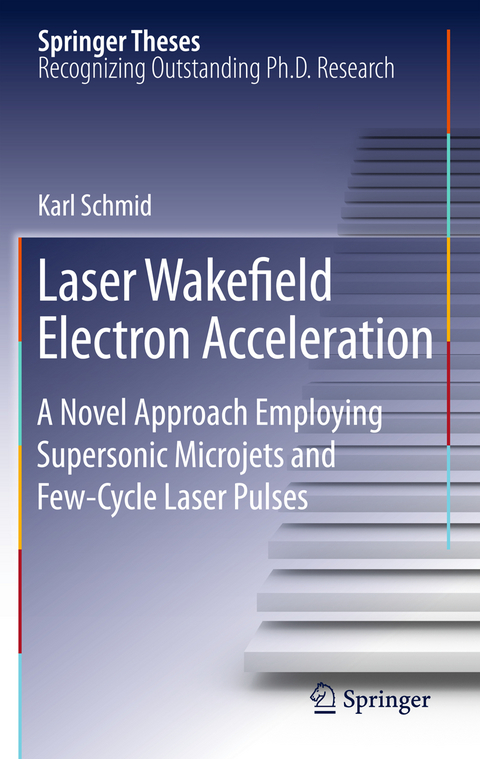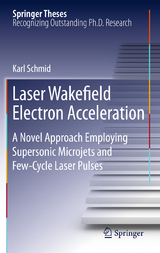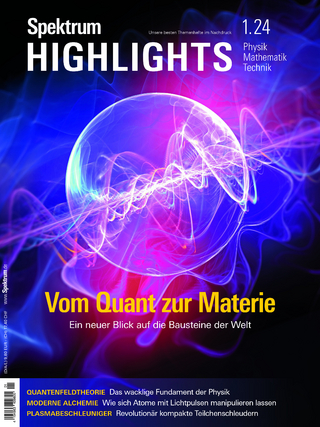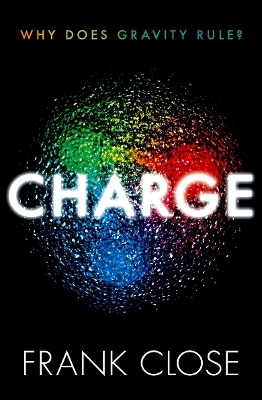Laser Wakefield Electron Acceleration
A Novel Approach Employing Supersonic Microjets and Few-Cycle Laser Pulses
Seiten
2011
|
2011
Springer Berlin (Verlag)
978-3-642-19949-3 (ISBN)
Springer Berlin (Verlag)
978-3-642-19949-3 (ISBN)
This book features research that can revolutionize the design and applications of particle accelerators. The results of this work will be invaluable in future research on electron beam acceleration.
This thesis covers the few-cycle laser-driven acceleration of electrons in a laser-generated plasma. This so-called laser wakefield acceleration (LWFA) relies on strongly driven plasma waves for the generation of accelerating gradients in the range of several 100 GV/m, a value four orders of magnitude larger than that attainable by conventional accelerators. This thesis demonstrates that laser pulses with an ultrashort duration of 8 fs and a peak power of 6 TW allow the production of electron energies up to 50 MeV via LWFA. The special properties of laser accelerated electron pulses, namely the ultrashort pulse duration, the high brilliance, and the high charge density, open up new possibilities in many applications of these electron beams.
This thesis covers the few-cycle laser-driven acceleration of electrons in a laser-generated plasma. This so-called laser wakefield acceleration (LWFA) relies on strongly driven plasma waves for the generation of accelerating gradients in the range of several 100 GV/m, a value four orders of magnitude larger than that attainable by conventional accelerators. This thesis demonstrates that laser pulses with an ultrashort duration of 8 fs and a peak power of 6 TW allow the production of electron energies up to 50 MeV via LWFA. The special properties of laser accelerated electron pulses, namely the ultrashort pulse duration, the high brilliance, and the high charge density, open up new possibilities in many applications of these electron beams.
Supersonic Micro-Jets.-Theory of Compressible Fluid Flow.- Numeric Flow Simulation.- Experimental Characterization of Gas Jets.- Few Cycle Laser-Driven Electron Acceleration.- Electron Acceleration by Few-Cycle Laser Pulses: Theory and Simulation.- Experimental Setup.- Experimental Results on Electron Acceleration.- Next Steps for Optimizing the Accelerator.- A. Numeric Setup of the Fluid Flow Simulations.- B. Nozzle Designs.
| Erscheint lt. Verlag | 19.5.2011 |
|---|---|
| Reihe/Serie | Springer Theses |
| Zusatzinfo | XIV, 166 p. |
| Verlagsort | Berlin |
| Sprache | englisch |
| Maße | 155 x 235 mm |
| Gewicht | 400 g |
| Themenwelt | Naturwissenschaften ► Physik / Astronomie ► Hochenergiephysik / Teilchenphysik |
| Naturwissenschaften ► Physik / Astronomie ► Optik | |
| Naturwissenschaften ► Physik / Astronomie ► Plasmaphysik | |
| Naturwissenschaften ► Physik / Astronomie ► Theoretische Physik | |
| Schlagworte | laser wakefield acceleration • MEMS nozzle • MPI Quantum Optics • Optical parametric chirped pulse amplification,OPC • Optical parametric chirped pulse amplification,OPCPA • Relativistic laser plasma physics • Springer Thesis Max Planck • supersonic flow • Teilchenbeschleuniger • Ultrashort laser pulses |
| ISBN-10 | 3-642-19949-6 / 3642199496 |
| ISBN-13 | 978-3-642-19949-3 / 9783642199493 |
| Zustand | Neuware |
| Haben Sie eine Frage zum Produkt? |
Mehr entdecken
aus dem Bereich
aus dem Bereich
Neue Sicht auf die Bausteine der Welt
Buch (2024)
Spektrum der Wissenschaft (Verlag)
9,80 €




